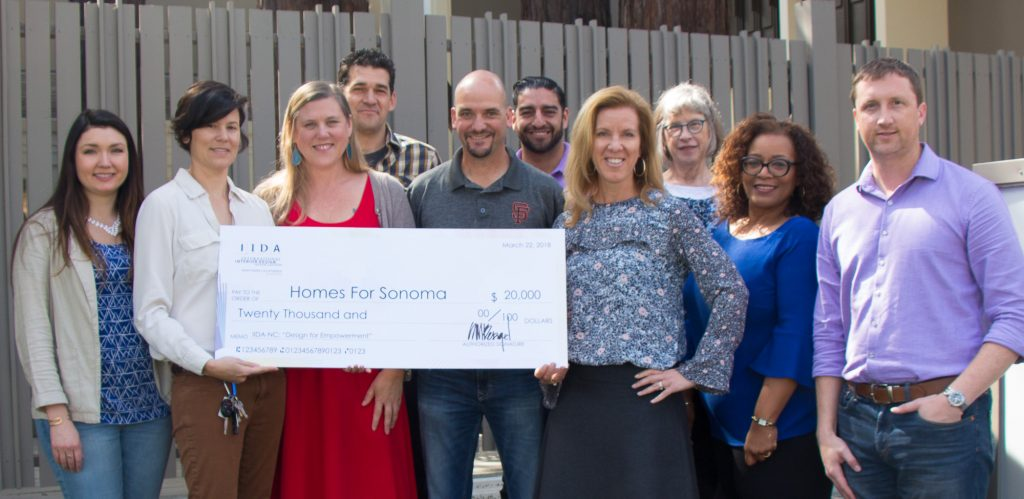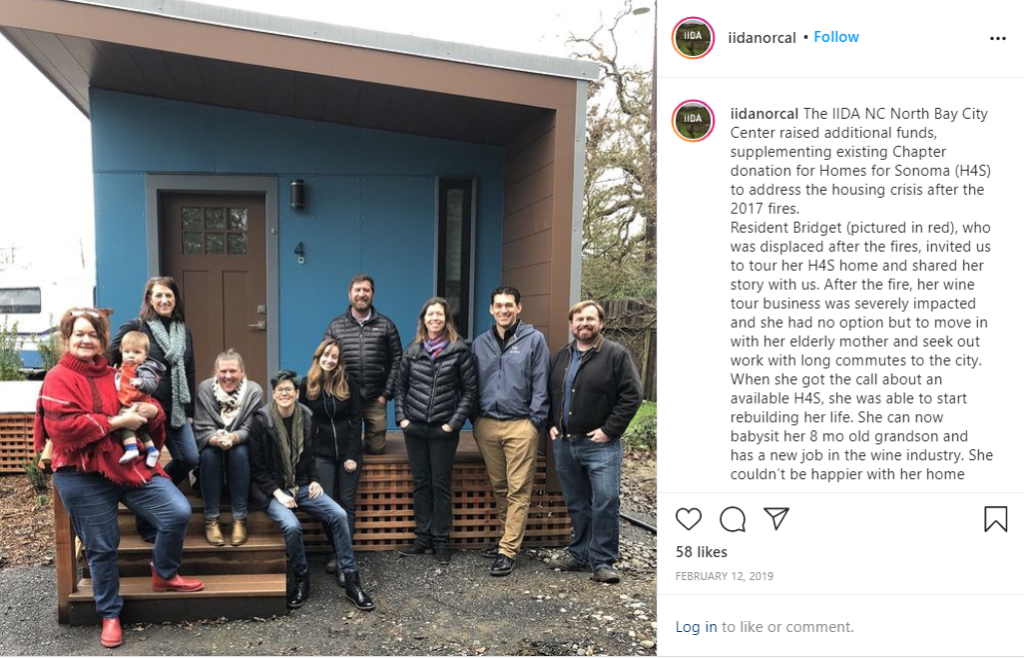December 11, 2020

Sonoma County, north of the San Francisco Bay, covers a large area, but it is a tight community with very few degrees of separation among its residents. When the 2017 Tubbs Fire took out nearly 6,000 homes in Santa Rosa, Sonoma County’s largest city, everyone was affected to some degree.
1 in 5 people had to evacuate, often with little warning and no time to save possessions. If you weren’t one of them, you knew someone who was. By the second day of the disaster, I had a space planner from Sonoma County and a furniture installer for a local dealership staying at my house in Petaluma with their family. They had lost everything and gotten out with minutes to spare before their Santa Rosa home burned to the ground.
Responding to a crisis like the Tubbs Fire is, at base, a design problem. What do survivors need in the short-, mid-, and long-term? What do cities and organizations need to help those evacuees, and to shore up and redirect their own infrastructure? These are the kinds of questions we designers are adept at understanding—and where our organized creative process provides a proven path to solutions.
In 2017, our North Bay City Center Director, Christina Pratt, Assoc. IIDA, owner of Trope Group, the local Herman Miller dealer had been evacuated from her home in the more rural part of Sonoma County, and Trope Group’s offices became a gathering space and safe haven for her employees who had been evacuated. With their usual work at a standstill, Trope Group put their centralized location and their fleet of trucks to use. They quickly set up a process for collecting supplies from local businesses and donation centers and delivering them to the shelters and evacuation facilities where they were desperately needed.
As the fire was contained and we began to look for next steps, individuals grappled with rebuilding while the cities and county faced an even bigger problem: the devastation of the fire had made our housing crisis much worse. Our homeless population had increased and some of the resources they’d relied on had disappeared—and, given the high costs in our area, many folks were simply finding it impossible to replace the homes they’d lost.
Only a short time later, a multi-disciplinary group of design professionals got together to brainstorm about how design thinking could help to re-house people quickly and efficiently—and Homes for Sonoma was born. This organization is composed of designers, architects, marketers, and community leaders who took a time of tragedy and turned it into an opportunity for a larger conversation about building, living, and working more densely.
After the fires, I advocated for our Northern California Chapter to throw all its philanthropic support toward this effort—and for all our City Centers to contribute to the pool, as well. The Board agreed, and IIDA Northern California donated its entire philanthropic funds for 2017, the largest donation in the chapter’s history, to Homes for Sonoma to further the design thinking strategies they had identified to help revitalize suburban Northern California. The North Bay City Center also donated to the organization, and various other monies were pooled for a total of $43,140 from our design community.
Less than a year later, Homes for Sonoma completed its first modular units and began to move survivors into new long-term housing for below-market rents. The organization continues to address this problem, actively looking for more land and also pursuing less traditional approaches like helping private homeowners establish accessory dwelling units on their property.

Within the design community, we have also continued our efforts to learn, explore, and offer real solutions. To continue the conversation about how we rebuild our community, the North Bay City Center focused its 2018 Spring Forum on the topic of “Revisioning suburbia and challenging our notion of density and scale.”
Of course, the need to respond to disasters never stops for long. In 2018, an even more devastating set of wildfires hit California, and in 2020 we, like the rest of the world, are dealing with the many impacts of the coronavirus. All varieties of commercial interiors have been greatly affected, and Sonoma County, which has historically been slow to embrace new technologies or remote working, has had a meteoric shift.
This is an amazing time for a greater strategic conversation about what our public spaces can be and how they might function better for the benefit of all. There’s a clear benefit to having design professionals—especially commercial interior designers—provide strategic input to cities, businesses, and leading organizations, as we are trained to bring insights into human behavior and experience and we have deep knowledge about materials, sustainability, and health and wellness to bring to every space we consider. Problem-solving is a design exercise, and when it comes to disaster response, we’ve demonstrated—as we did in the aftermath of the Tubbs Fire—that we can bring unique insights and create valuable long-term solutions.
